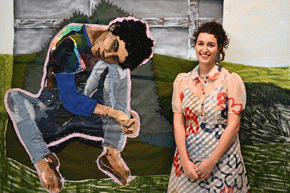The Steinsaltz Chumash: a book review by Rabbi Jeffrey Cohen
Traditionally J-Wire does not review obvious religious publications such as prayer books and bibles.

Rabbi Adi Steinsaltz
In particular, the Torah has produced a number of Hebrew English editions with commentaries. Gone is the ubiquitous Hertz Humash- correctly called The Pentateuch by Chief Rabbi (Joseph) Hertz. Now each major religious group has its own- Reform’s Plaut edition: The Torah- a Modern Commentary, Masorti has Etz Hayyim edited by Harlow and in most Orthodox (Australian) synagogues Artscroll’s Stone Humash is found. The first two use the Jewish Publication Society’s translation (and available in the JPS Tanakh) while the third uses its own translation.
One thing that distinguishes the Stone Humash is its rejection of any commentary that is not from traditional Jewish sources, unlike the Hertz Humash. The Stone Chumash does contain the major rabbinical commentator –Rashi from medieval France- and it is below the Hebrew text. For most who can read Hebrew Rashi’s commentary uses a script which is undecipherable to the average synagogue-goer. It then has an English commentary drawn from both traditional and modern orthodox sources.
This edition has a number of variations which are interesting. First, it follows most of Koren’s bilingual publications with the Hebrew on the left and English on the right which I have come to appreciate.
The second change is that the Rashi commentary is now available in classical Hebrew script. This is not the first edition to do this- one was published in 1929 edited by Silberman (et al) and called Pentateuch with Rashi’s Commentary.
The third change is a technique Steinsaltz introduced in his edition of the Talmud. Rather than relying on commentary below the line, he introduced it into the text itself. He also developed a technique to ensure the user was always aware of the difference between the text and his expansion/commentary- the text is presented in bold type and it is always clear between the two. There is also some additional expansion on the text with footnotes.
It is printed on what is called India weight paper, as is the Stone Humash. It is a very lightweight paper and has the challenge that what is printed on the other side almost comes through. It is the one way publishers can keep the weight and size to a minimum- this is 1311 pages and heavy enough.
This unique edition brings clarity and understanding not available in English in other editions.
This should be available in synagogues and found in Jewish homes for it will enable a better understanding of a text which has driven Jewish life for millennia.
The Steinsaltz Chumash
Adin Steinsaltz- Editor
Koren Jerusalem 2018







